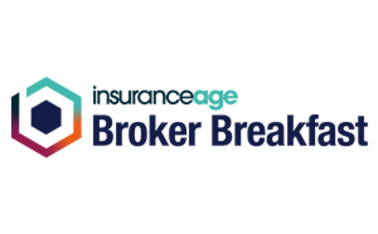
Product overview: Financial lines

Running a business or providing professional advice comes with responsibilities, with individuals personally accountable for any mistakes they make. As both accountability and litigation has increased over the years, the financial lines insurance market has given these individuals the confidence they need to operate.
These risks were first recognised in the 18th Century, with professional indemnity insurance giving solicitors, accountants and other professions the reassurance that they wouldn’t face bankruptcy if they were sued by a client or third party.
Covering directors
Directors and Officers (D&O) insurance is a more recent addition to the financial lines market. The first policies were written in the 1930s after the Companies Act 1929 introduced a personal responsibility for directors in the UK. Across the pond in the US, similar moves were taking place, as it sought to tighten up regulation after the Wall Street Crash of 1929.
Although sales ticked over for the first 50 years in the UK, it wasn’t until the late 1980s that the D&O market really took off, following clarification that a company could pay for cover for its directors. “Demand and supply exploded, with lots more underwriters coming into the market, coverage expanding and rates coming down,” says David Walters, head of financial lines at PIB Insurance Brokers.
The D&O market saw some challenges, with the Enron and Worldcom scandals in 2001 and 2002 respectively, followed by the financial crisis of 2007/8, the most sizeable. However, although claims were coming through, the market was relatively stable before the pandemic. “Pre-Covid-19, D&O was very much a commoditised product,” says Tristan Sargeaunt, managing director of Protean Risk. “The market was very benign, with premiums low and very few claims. Then Covid-19 struck and the market started to turn, especially on claims performance. Insurers were experiencing losses, with the pandemic adding a layer of uncertainty.”
Hard markets
This caused the market to change dramatically. “The market has retreated with some carriers pulling out, underwriting criteria getting tougher and rates going up over the last few years,” says Walters.
As examples, Sargeaunt says that smaller firms that were spending £1,000 on D&O are now spending £5,000, with listed companies with five figure premiums being hit with increases of between 50% and 100%. “Even the cleanest risks with no claims and financially sound are seeing increases of 15% to 25%,” he adds.
The professional indemnity market is in a similar state. For it, the trigger for change was the findings of a Lloyd’s of London review into performance in 2018. This found that non-US professional indemnity was the second worst-performing class of business, resulting in a £435m loss over the preceding six years. “The market flipped really quickly on the back of this, with syndicates and MGAs pulling out, tightening wordings and increasing premiums,” says Dylan Hughes, managing director of Brunel Professions. “The market’s been really hard for the last two to three years. If you can renew and only get a 20% increase in premiums, that’s a good result.”
Some sectors have been hit more than others. After Grenfell, anything construction related, including architects, fire safety, cladding, has struggled to get affordable cover. Surveyors can also prove problematic, following concerns about property valuations. Additionally, the hard market hasn’t been good for sectors such as lawyers and financial advisers that have always had issues getting cover.
Hughes says there are also potential issues at the smaller end of the market, where cover is typically sold online. “Underwriters ask whether there are any material facts and usually the insured says no but, if they then come to make a claim, they can find out that cover isn’t as broad as they thought due to nondisclosure,” he explains.
Turning market
While the current financial lines market may be challenging, there are signs of improvement. New players are coming into the market plus MGAs are able to offer capacity, predominantly in the excess level. Over time, it’s expected that as they build up portfolio and premium income, they will be able to offer primary cover too.
New capacity is good news for brokers. Walters says that where a carrier doesn’t have long tail exposure, it can be easier to do a deal. “We’re really having to call on the broking disciplines that we’ve learnt to get placements: we have to make sure the underwriters feel comfortable with the risk,” he adds. “It’s an interesting but challenging market.”
Hughes agrees. He says that it’s vital that risks are well marketed to underwriters. He’s seen clients put together video presentation to demonstrate why they should get cover. “It can work really well but you do need to ensure it flushes out what the business is all about,” he adds. “This client secured a 60% saving by doing this.”
He predicts that the PI market will start to soften over the next 12-18 months with Sargeaunt also looking at 2022 for the first signs of the market stabilising as more primary competition returns.
Future uncertainties
Although there are signs of improvement, there are also a number of potential risks on the horizon. Alongside issues such as the MeToo campaign, environmental, social and governance responsibilities, and board diversity, the pandemic may also increase the risk of claims.
Directors could see claims being brought against them for the way the business was run during the pandemic, whether that relates to employee health and safety or the balance sheet. The withdrawal of government furlough support may also lead to more businesses becoming insolvent, which is often a trigger for claims. “Could the end of furlough lead to more insolvencies?” asks Sargeaunt. “Insurers are wary of those in impacted sectors such as leisure, travel and hospitality. They’re waiting to see how Covid-19 will play out.”
*Correct as of November 2021*
Top five takeaways
- D&O products were fairly commoditised before the pandemic but losses coupled with greater uncertainty has seen the market harden, with steep rate rises feeding through.
- Lloyd’s of London’s performance review was the trigger for the professional indemnity market hardening, with its finding that the non-US market was the second worst performer reducing capacity and increasing rates.
- Broking discipline is essential. Engaging early and investing in a professional presentation are key to ensuring underwriters feel comfortable with the risk.
- New capacity is coming into the market, predominantly in the excess level. Without the long-tail exposure of other insurers, they can be more comfortable with risk.
- Insurers are waiting to see whether there will be a wave of claims as furlough ends and stakeholders question director performance during the pandemic.
Only users who have a paid subscription or are part of a corporate subscription are able to print or copy content.
To access these options, along with all other subscription benefits, please contact info@insuranceage.co.uk.
You are currently unable to print this content. Please contact info@insuranceage.co.uk to find out more.
You are currently unable to copy this content. Please contact info@insuranceage.co.uk to find out more.
Copyright Infopro Digital Limited. All rights reserved.
You may share this content using our article tools. Printing this content is for the sole use of the Authorised User (named subscriber), as outlined in our terms and conditions - https://www.infopro-insight.com/terms-conditions/insight-subscriptions/
If you would like to purchase additional rights please email info@insuranceage.co.uk
Copyright Infopro Digital Limited. All rights reserved.
You may share this content using our article tools. Copying this content is for the sole use of the Authorised User (named subscriber), as outlined in our terms and conditions - https://www.infopro-insight.com/terms-conditions/insight-subscriptions/
If you would like to purchase additional rights please email info@insuranceage.co.uk








